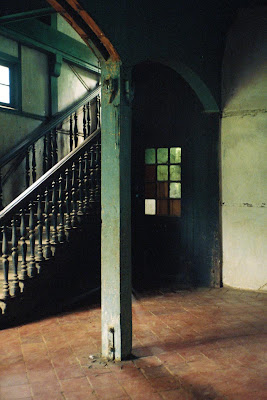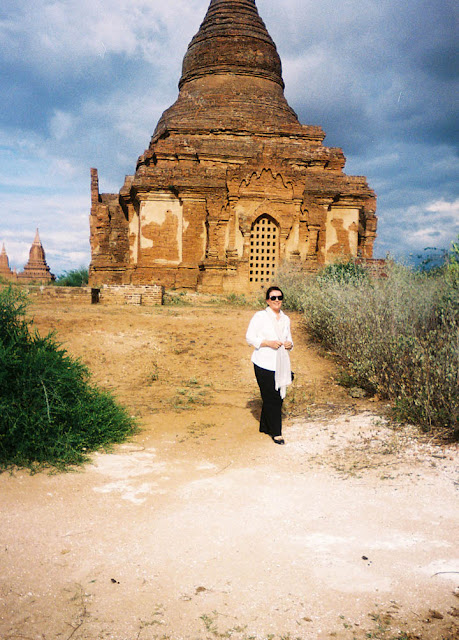The Brilliant French Interior Designer Jean-Louis Deniot takes us on an Imaginary Voyage at the dramatic gallery presentation, AD Interieurs 2012, recently attracting the chic design crowd at Artcurial.
The recent vernissage for the glittering ARTCURIAL/AD event attracted a swarm of top design locomotives and chicer-than-chic socials of the Paris Scene. Among the happy and pretty people seen admiring his decor, scoping out the curtains, lingering among the witty furnishings and chatting up a storm and congratulating Jean-Louis Deniot were Diane de Beauvau-Craon, Pierre Berge, Francois Cautroux, Jean de Merri, Pamela Golbin, William Holloway, Virginie Deniot, Heather Walter, Andrew Gn, Joseph Dirand, Jane Alexander,David Collins, the fabulous founders of Alta Pampa, Becca Cason Thrash and John Thrash, Ariane Dombasle and her swell Bernard-Henri Levi (BHL) and Yves Carcelle and too many fabulous swells to list here. It was a more-than-memorable scene.
Pour a glass of good wine, make a cup of tea, and take a seat in your favorite chair. This is a very inspiring story, full of surprises, lots of details—and the magic of very ultra-insider information on materials, manufacturers, artists, fabric credits and everything you need to know to create worlds of wonder. Come with me on a design revelation.
If you were a classically trained French architect/interior designer, known for elegant, restrained, and superbly polished work—and you were invited by editors of French Architectural Digest and the prestigious Paris auction house, Artcurial, to design a room with the theme, ‘Imaginary Voyages’ what would you dream up?
Top Paris designers invited to create décor for this prestigious event included Jean-Louis Deniot, Thierry Lemaire, François-Josef Graf, Bruno Moinard, Chahan Minassian, Vincent Darré, Dimore Studio, Pierre Yovanovitch, Rafael de Càrdenas, Charles Zana, Rose Anne de Pampelonne, Joseph Dirand, Francis Sultana.
In the case of the super-star designer, Jean-Louis Deniot, his installation/décor was ‘out of this world’ with virtuoso never-seen techniques, daring swoops of the imagination, and an exploration of ideas without boundaries.
Each surface offered new materials and techniques, hallucinatory effects, a new definition of luxury, craft, visual delight and chic. Every move is inspiration. Come for an exclusive visit.
Intérieurs 2012 - AD France/Artcurial
Notes from Jean-Louis Deniot:
“The initial concept was to portray a maximum of richness and opulence, but in the most contemporary way possible.
In classical decor, every millimeter has a specific treatment, finish and pattern.
In this space, the accumulation of different effects provides a sense of completeness, sophistication, and lushness to the décor.”
Jean-Louis Deniot said:
“In this exhibit, I wanted every element of the architecture and furnishing to be excessive.
The theme is ‘Imaginary Voyages’ so I created a décor that would give an extreme interpretation of the theme; nothing realistic, nothing common or anticipated, nothing ever seen before or imagined...mingling risk, audacity, and high decoration.”
Jean-Louis Deniot said:
“I have coined this new style ‘Contemporary Maximalism’.
I wanted a real show piece, so I designed the décor as a complete artistic interior installation. I wanted the public to be able to experience an over the top interior bursting with drama and fun. The composition and scale was the key; to have mass, space, volume, shadow, light, juxtapositions, and direct dialogues between the interior architecture and furnishing.”
Jean-Louis Deniot said:
“I selected a motif which at first simply seems graphic but which is in fact very complex and ornamental. It is very rich with not a single straight line.
The concept behind using the same exact pattern but in various different scales was to limit the cacophony. The idea was not to create a dizzying effect but the opposite. For the eye to be able to slide over the space and each element therein, as not one square inch of the space has been ignored.”
According to Jean-Louis Deniot:
“As well as the ethnic and imaginary notions behind my theme, I included pieces manufactured from more than a dozen different countries so as to represent my love of travel, different destinations and local craftsmanship.
The pattern is featured in the smallest scale on the wall and crown upholstery, almost disappearing into the scene, but still gives a backdrop and substance to all the other elements.
That fabric, bearing the motif that serves as the base element in the design, is composed of wild silk and manufactured in Thailand.”
Jean-Louis Deniot explained:
“As for the carpet, a fragment of the base motif was blown up to fit the scale and define the furniture layout. It was manufactured in China, using various different weaving techniques.
The pattern featured on the carpeting defined the sofa and coffee table design and geometry. The sofas were manufactured by Jean de Merry in Los Angeles, and are covered in six different Italian linens to create shadows and accentuate movement.
Fragments of the same motif are found in the 68 intricate pieces of distressed bronze and parchment of which the extravagant chandelier is composed.”
Explanation of the concepts:
“The immense screen features another rendition of the motif, painted behind glass by a talented decorative painter who specializes in paint on glass techniques.
A very large fireplace covered entirely in mosaics of distressed mirror was developed using the motif on yet another scale.
I commissioned Jean-François Lesage, who is based in India, to manufacture a large screen to be embroidered with leather laces, bone pearls, raffia, parchment appliqués and bronze thread.
The wooden paneling in the vestibule was manufactured to include three layers so as to create a 3 dimensional effect with recessed volume, cut-outs, and projected pieces.
“In general, the perspectives are completely abstract; losing sense and logical balance. The visitor senses a two-, three- or even multi-dimensional effect.
A poetic, dreamy, surrealistic décor... exactly as I intended., I had so much fun putting it all together with no limits.”
CREDITS:
PHOTOGRAPHY:
All photography by Paris-based Xavier Béjot. Presented here with express permission of the photographer.
Xavier Béjot is one of the most talented and technically accomplished photographers shooting interiors today. After receiving a degree graphic arts in Paris, Béjot opened his studio specializing in interior design after learning the art of photography with Vincent Knapp.
Xavier Béjot’s work has been published in all the top European design magazines and he has had a long-term collaboration with AD Germany.
Today he works with some of the most celebrated designers, primarily Jean-Louis Deniot, whose work he records He also produces stories published in the top architecture and design magazines worldwide.
THE DESIGNER:
Jean-Louis Deniot
www.deniot.com
DESIGN CREDITS:
Entry
Door curtain fabric, in front of the entry door – Linen and beige cotton by Romo, manufactured in Italy.
Entry hall carpet – Diagonal loop in white, ivory and beige cotton, designed by Jean-Louis Deniot and manufactured by Tai Ping in China.
Backlit paneling (walls and ceiling) – Medium laser cut and laquered, designed by Jean-Louis Deniont and manufactured by CEMAD.
Console ‘Metal Blade’ – Oxidized brass designed by Jean-Louis Deniot and manufactured in Morocco.
Cubist lamp – Lamp in plaster, designed by Jean-Louis Deniot and maufactured by Atelier Prométhée, France. Lamp shade designed by Jean-Louis Deniot, custom-made by Anne Sokolsky, France.
Mirror – Frame in patinated plaster in the style of parchment, designed by Jean-Louis Deniot and manufactured by Atelier Prométhée, France. Antique mirror – by Gottardo.
‘Faux’ stone Monolithic bench – Patinated plaster in the style of marble, designed by Jean-Louis Deniot and manufactured by Atelier Prométhée, France.
Living Room
Crown molding carpentry and back-lit baseboard – Designed by Jean-Louis Deniot and manufactured by CEMAD, France.
Wall upholstery fabric – ‘Soie Sauvage’ by IDO, manufactured in Thailand.
Door curtain fabric - ‘Soie Sauvage’ by IDO, manufactured in Thailand.
Chimney – Inlaid antique mirror designed by Jean-Louis Deniot, manufactured by Gottardo, France.
Pair of rock crystal decorative obelisk firedogs mounted on structural metal beams, designed by Jean-Louis Deniot, manufactured in France.
Carpet – Cotton in 3 levels, brown, ivory and beige, custom-designed by Jean-Louis Deniot and manufactured by Tai Ping, China.
Embroidered shade across the window – Taffeta fabric by Pierre Frey, embroidered with beaded bone, wood, rafia, bronze thread, parchment and leather thread. Design by Jean-Louis Deniot and embroidery by Jean-François Lesage, manufactured in India.
Glass screen – Decorative paintwork behind glass designed by Jean-Louis Deniot and fabricated by Florence Girette, France.
Coffee table – Plexiglass top and polished brass structure which recreates the carpet pattern. Designed by Jean-Louis Deniot and manufactured by Jean de Merry, USA.
Art piece on the coffee table – Cast iron, 'Cross Egg' by David Nash, England.
1930s Vase on the coffee table – Glazed earthenware from Onsite Antiques, France.
19th century Japanese canoe cut ornament on the coffee table – Exotic wood, from Onsite Antiques, France.
Custom-made sofas – Fabric ’89 Linara Peppercorn’ linen and cotton in 5 shaded tones by Romo, Italy. Structure designed by Jean-Louis Deniot to replicate the carpet pattern. Manufactured by Jean de Merry, Los Angeles.
Reading lamp with tray in polished brass. Designed by Jean-Louis Deniot and manufactured in Morocco. Lampshade in natural fibres (abaca), designed by Jean-Louis Deniot and custom-made by Anne Sokolsky, France.
Sculptures – Sculpted oak by David Nash, England.
Sculpture Bases: Patinated, oxydized bronze, designed by Jean-Louis Deniot and manufactured in Morocco.
Chandelier – Patinated brass and parchment, designed by Jean-Louis Deniot to reflect the motif pattern of the carpet. Custom-made by Ombre Portée, France.





































































